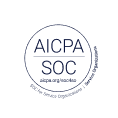
Episode 49 | July 19, 2022
UX measurement made simple with the PURE Method
Discover how Christian Rohrer uses the PURE Method to simplify UX measurement, delivering actionable insights without costly, time-consuming research.
Transforming UX measurement with the PURE Method
User expectations evolve faster than most teams can test, measuring usability often feels like trying to hit a moving target.
That’s why the latest episode of Insights Unlocked featuring Christian Rohrer, Vice President of Experience Design at TD Bank, is a must-listen for UX and product leaders navigating the challenge of delivering seamless digital experiences.
UX measurement doesn’t have to be overwhelming
Measuring user experience (UX) is critical—but as Christian points out, it’s rarely straightforward. “If we're measuring user experience, the first thing we should do is talk about what user experience means,” he says. “It’s all aspects of every interaction with a brand or a company or a product.”
That’s a broad definition, which can make UX measurement feel daunting and difficult to operationalize. Rather than trying to capture every single user touchpoint, Christian advocates for focusing on specific aspects of usability. And that’s where the PURE Method—Pragmatic Usability Rating by Experts—comes into play.
GUIDE
Keys to impactful designs that drive goal conversion rates
What is the PURE Method?
The PURE Method is a fast, focused way to evaluate product usability without relying on extensive user testing. Instead of collecting empirical data from end users, it uses expert analysis to score how easily a target user can complete a specific set of tasks.
Christian explains, “It’s not a research method. It’s an analytical method… a way to provide a score that reflects its likely ease of use for the target audience.”
Key features of the PURE Method include:
- Task-based scoring: Evaluators score a limited set of key user tasks—typically 5 to 10, or more for complex products.
- Target audience clarity: Scoring is done from the perspective of a defined user type to ensure consistency.
- Expert panel review: Like Olympic judges, a panel observes the same product interactions simultaneously, reducing variability in evaluations.
- Color-coded scorecards: Results are summarized in an executive-friendly format with red, yellow, and green scores for quick insights.
Why PURE is different from heuristic evaluation
While both the PURE Method and heuristic evaluations use expert reviewers, the structure of PURE ensures more consistent and impactful outcomes.
Christian notes, “With heuristic evaluation, raters are independently reviewing a product… they see very different things.” In contrast, PURE synchronizes the experience: “They're seeing the same experience at the same time,” which improves both reliability and usefulness of results.
Another distinction lies in scope. Heuristic reviews often attempt to uncover all usability issues. PURE narrows the lens to top tasks, aligning the evaluation with business and user priorities. This makes the results not just usable, but also actionable UX insights.
Making UX scores business-ready
PURE scores aren’t just useful for UX teams—they’re designed for executives, product managers, and business leaders who need clarity, not complexity.
Christian describes the ideal presentation: “What they do like is that high-level scorecard. It shows them exactly where to focus, what to worry about.” Behind each score is a slide detailing the step, the usability issue, and proposed improvements—bridging the gap between measurement and action.
This dual-format approach allows leaders to quickly identify UX pain points, while giving designers and researchers the guidance needed to fix them. It also makes PURE an effective tool for UX benchmarking, especially in organizations that need to keep pace with rapid product cycles.
A complementary tool, not a replacement
Christian is clear that while PURE isn’t a substitute for user interviews or empirical usability testing, it fills an important gap. Traditional methods can be resource-intensive, and not always feasible for frequent or fast-paced evaluations.
With the PURE Method, teams can:
- Run evaluations in under a week
- Benchmark usability with consistency
- Align design improvements to core business goals
- Empower both product and UX stakeholders with clear next steps
It’s a pragmatic alternative for organizations looking to embed UX strategy into their broader decision-making frameworks without slowing down development.
Final thoughts: clarity and speed without compromise
For teams caught between the need for speed and the demand for quality, the PURE Method is a breath of fresh air. It strips away the complexity of traditional usability testing while preserving its most essential goal: ensuring products are easy to use for the people they’re built for.
“Do I have a problem? Yes. Okay, I see where the problems are. What do I need to do about it? Go here, go here, go here,” Christian explained. “It gives the team a way to get out of the trough of despair.”
And that, in the end, is what great UX is all about—clarity, confidence, and continuous improvement.
Episode links:
- Making the case for content testing in your organization: This webinar features Bobbie Wood, co-founder and CEO of the UX Content Collective, and Lynne Robertson, Manager of UX Writing at UserTesting. They share strategies for advocating content testing within organizations, emphasizing the importance of integrating content evaluation throughout the design and development cycle.
- The complete guide to user interviews: This comprehensive guide explores the role of user interviews in the product development lifecycle. It covers various types of interviews, best practices, and how UserTesting's Live Conversation can streamline the process, providing actionable insights to improve UX.
- How to build products customers actually love with continuous discovery: In this episode of Insights Unlocked, Teresa Torres discusses the importance of continuous discovery in product development. She emphasizes integrating customer feedback early and often to align products more closely with user needs, reducing costly rework.
- How to conduct user interviews for better UX: This blog post delves into the benefits of user interviews, highlighting how they can uncover deep insights into user behaviors and preferences. It also discusses how UserTesting's platform facilitates efficient and effective user interviews.









